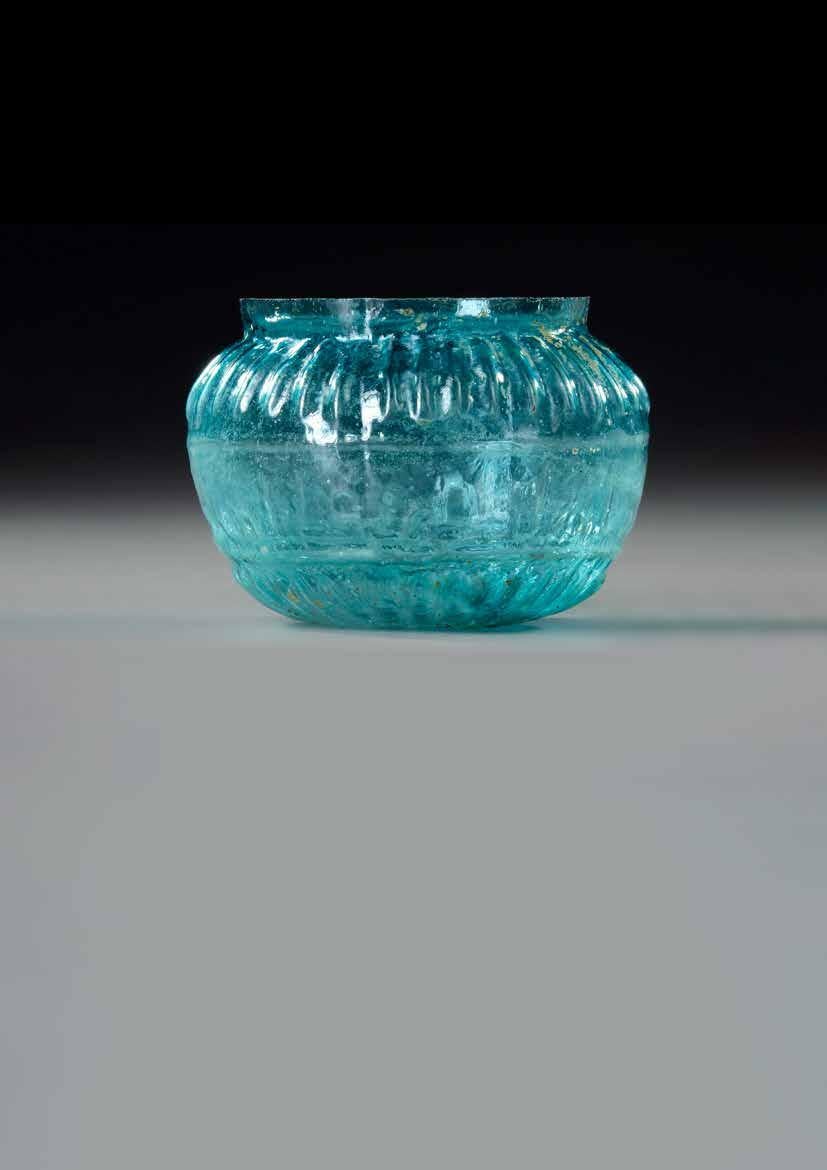
1 minute read
AN ILLUMINATED PERSIAN QURAN SIGNED MUHAMMED MUHSEN
AL-ISFAHANI, LATE SAFAVID OR AFSHARID DYNASTY, DATED 1156 AH/1743 AD
A complete Quran, Arabic manuscript on cream paper, each page with 22 lines written in black naskh script, tajwid in red, reserved in clouds against a gilt ground and ruled in double gilt borders, gold roundel verse markers. Surah headings in blue thuluth script on gilt ground, gold and blue marginal floral motifs indicating ‘the Juz’. Two opening pages heavily with gilt and light-blue decoration framing 6 lines of black naskh script in clouds reserved against a pricked gold ground. The margins on each page finely decorated with gilt foliage scrolls.
Advertisement
The last page with a prayer for completion of the recitation of the Quran (Due-al-Khatm) signed Muhammed Muhsen al-Isfahani dated in 1156 AH/1743 AD.
In later Qajar lacquer binding decorated central with floral motifs surrounded by gilt double border. 9 by 14 cm.
Estimate € 50.000 - € 80.000
Farhad Mirza Motamad al-Dawla (b. 1233/1818, Tabriz, d. 1305/1888, Tehran), Qajar prince-governor, author, and bibliophile. He was the fifteenth son of Abbas Mirza, a younger brother of Mohammad Shah, uncle of Naser-al-Din Shah, and a learned and influential Qajar prince known for his firm governorship over several provinces of Persia. He spent some of his adolescence in Tabriz, where he was instructed not only in traditional Persian and Islamic subjects but also in the English language, geography, and astronomy, some of which were taught by British subjects in the service of Abbas Mirza at the time. In 1250/1835, at the age of only seventeen, he was assigned to attend to the affairs of Lorestan and Kuzestan by his brother Bahram Mirza, who himself had recently been put in charge of that area by the newly crowned Moḥammad Shah. Farhad Mirza’s stay in the south of Persia lasted about two years but was successful enough to make Mohammad Shah summon him to Tehran to be in charge of the capital during his absence on two critical occasions: in Rabi II 1253/July-August 1837, when he was setting off to capture Herat, and in 1255/December 1839-January 1840, when he marched to Isfahan to settle with the powerful cleric, Sayyed Mohammad-Baqer Safti, who had renewed his perennial opposition to the state, promoting unrest and rebellion against the local government. Mohammad Shah and his grand vizier, Hajj Mirza Aqasi ,ultimately returned to the capital sixteen months later and observed, to the former’s delight, that Farhad Mirza had ably managed to maintain peace and order in the capital.












